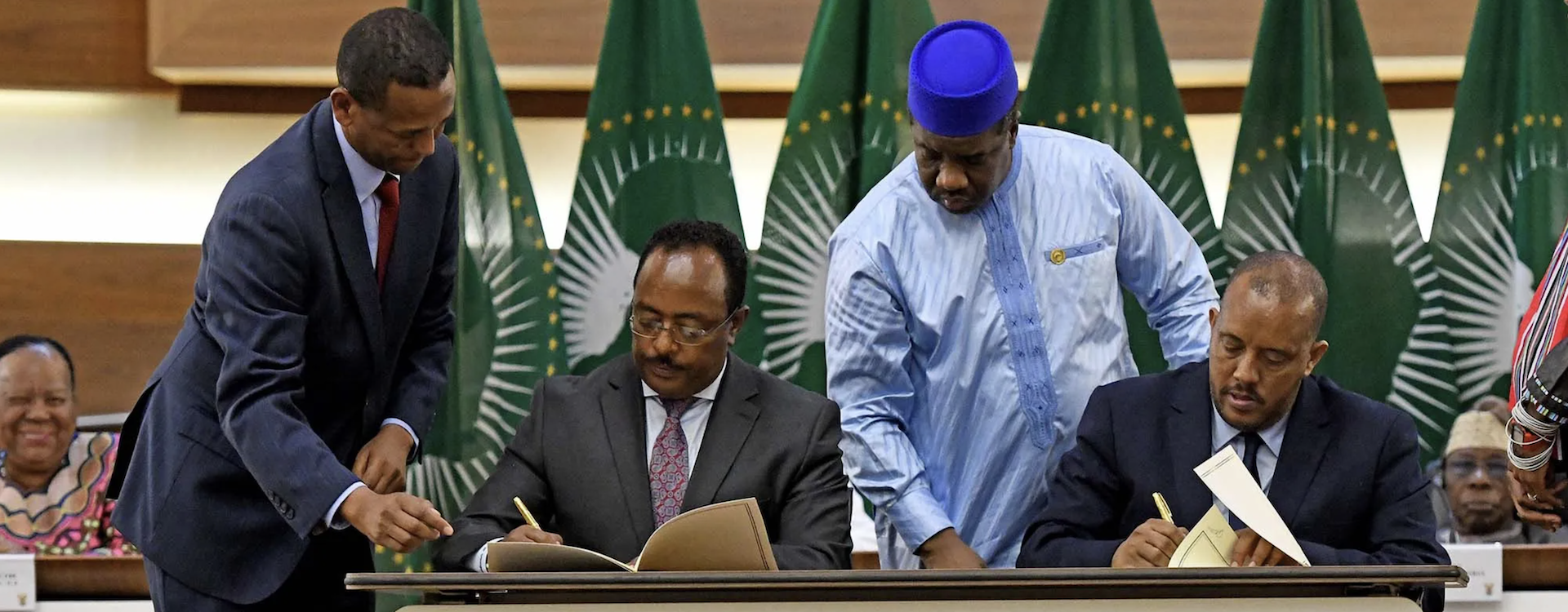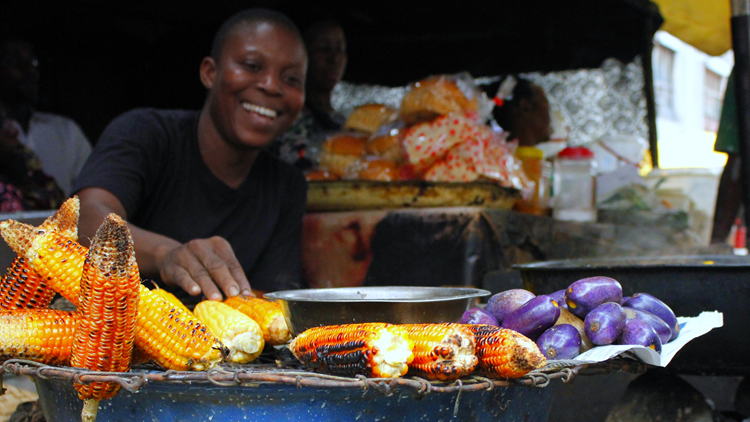Inclusive talks could help bring sustainable peace to Ethiopia

The 2022 Pretoria peace deal is a good start – but to address all of Ethiopia’s conflicts, all parties need to come to the table.
The November 2022 Pretoria peace deal heralded the end of a vicious two-year conflict between Ethiopia’s government and the Tigray People’s Liberation Front (TPLF). The conflict engulfed the country’s northern Tigray, Amhara and Afar regions, resulting in unimaginable atrocities, suffering and destruction.
The conflict saw more battle-related deaths ‘than the wars in Ukraine, Yemen, Myanmar, Nigeria, Somalia, Mali and Burkina Faso combined’ in 2022, said Siri Aas Rustad, Peace Research Institute Oslo research professor. ‘While Russia’s invasion of Ukraine dominated global headlines, atrocities on an unprecedented scale were being committed in … Ethiopia.’
Former Nigerian president Olusegun Obasanjo, who led the peace talks, said the signing of the Pretoria accord ‘stopped at least 1 000 deaths per day.’
But this war is just the tip of the iceberg of Ethiopia’s conflicts. Since Prime Minister Abiy Ahmed Ali came to power, numerous clashes across the country have led to substantial displacement and uncountable deaths. Examples include the crises between Oromia and the Somali regional state and those in Benishangul-Gumuz, and multiple clashes between federal forces and armed militia in the Oromia region.
In Oromia, the Oromo Liberation Army – AKA Shene – continues its assaults on the Ethiopian National Defense Force (ENDF) and civilians. And in Benishangul-Gumuz, the local armed militia who previously signed a peace deal with the government are at war with ordinary citizens.
If inclusive, genuine political discussions are not held, Ethiopia could find itself in another round of bloody war
The African Union (AU) brokered the 2022 Pretoria peace agreement in line with its Silencing the Guns agenda and in the spirit of African-led solutions to African problems. Both conflicting parties were tasked with responsibilities for the success of the cessation of hostilities and peace deal.
The TPLF was expected to hand over control of all federal facilities in the region and heavy armaments, refrain from working with other armed groups in the country, and refrain from readying itself for another conflict. The government was expected to restore all essential public services in the region, halt any military operations and lift the terrorist designation on the TPLF.
Both parties made significant strides in implementing the agreement. The TPLF handed over its heavy weapons, and allowed federal forces to control facilities such as airports, banks and telecom installations. The government kept its promise to remove the TPLF from its terrorist list. It expedited the resumption of basic services, such as telecoms, banking and transportation to the people of Tigray.
The peace deal was important in stopping the war. But for sustainable stability, it can’t be all. Truly sustainable peace in the country is going to take more than the signing of one peace deal. It’s going to take ongoing talks that include all stakeholders – i.e., national dialogue. The government, all warring parties, civil societies, religious groups, and most importantly youths should come to the discussion table. The government should spearhead bringing these stakeholders together. But civil society groups should play their part in doing this, and the international community, especially the AU and Intergovernmental Authority on Development, should help.
Since Abiy Ahmed Ali came to power, numerous conflicts countrywide have led to substantial displacement and uncountable deaths
Ethiopia should take important lessons from other countries’ successes and failures in similar efforts. For instance in Sudan, dialogues that took place were not genuine, and didn’t address the country’s main problems. The government appointed a convener without consulting key stakeholders. So in a deeply divided country like Ethiopia, the political will to have genuine national dialogue and the public trust towards it are vital.
Moreover, for national dialogues to realise their goals, they need to be linked to other existing frameworks. In South Sudan, the national dialogue emerged at the same time as ongoing IGAD-led mediations. Yet the two processes were not clearly linked, resulting in tensions. Those preferring the IGAD mediation regarded the national dialogue as a cooptation instrument of the president. Ethiopian national dialogue should therefore not be seen as an end in itself, but rather a process that lays the groundwork for wider political, economic and social reforms.
Most importantly, peace talks should be based on the principles of inclusiveness and broad participation. Diverging needs and interests must come together to reach transformative decisions. In South Sudan, the peace talks were designed to be bottom-up, and included more than 20 000 people in the over 200 meetings. Yet the numbers were merely a ‘fig leaf’, as major opposition parties and armed groups were absent, and the overall process failed.
For Ethiopia to build sustainable peace, discussions need to include all major political actors. While the 2022 peace deal brought relative peace to Tigray, it also resulted in disagreement. The recent instability in the Amhara Region can be traced back to the absence of Amhara representatives in the deal, despite their being active throughout the war. Amhara organisations and politicians welcomed the deal only half-heartedly and the Amhara Association in America criticised the peace deal for excluding Amhara voices.
Truly sustainable peace in the country is going to take more than the signing of one peace deal
The National Movement of Amhara (NaMA), a political party, also issued a statement expressing concern over the details and nature of the deal. It referenced article 10(4) of the agreement that calls for the parties to solve issues of contested areas of Welkait and Raya as per Ethiopia’s Constitution. It reiterated the need to incorporate these areas into Amhara. Moreover, NaMA specified the anti-Amhara nature of the Constitution and said it couldn’t be used to solve such issues of contestation.
Before the Tigray war, the Amhara and Tigray regions disputed the ownership of these two areas. When the war broke out, the Amhara Special Force and Fano militias, together with the ENDF, controlled these areas, for the first time in about 30 years. Rallies were staged to request the federal government to officially demarcate the areas into the Amhara Region. However the TPLF spokesperson and leader of Tigray’s interim administration blamed the Amhara forces for their expansionist attitude, and affirmed the protection of the region’s territorial integrity as its main objective.
People in Tigray held a demonstration demanding the immediate withdrawal of Amhara’s invading forces and the return of those who were displaced to Welkait and Raya.
In response, Fano militias reaffirmed their commitment to not allow the return of these areas to Tigray. They described the recent dismantling and reintegration efforts of regional Special Forces as a pretext to diminish possible regional resistance and to return Welkait and Raya to the TPLF.
This resulted in a fallout. The ENDF was deployed to the region, but was met with resistance, leading to uncountable deaths and instability that continues to date. The government accused numerous individuals, journalists, political analysts and Fano leaders of terrorism. In addition, it organised pro-ENDF rallies in different parts of the country, affirming its support for the defence forces in their fight against violent extremism. This was similar to the nationwide rallies it organised just before it clashed with the TPLF. This state of limbo ended in the recent full-scale conflict between the Fano and ENDF.
If inclusive, genuine political discussions are not held, Ethiopia could find itself in another round of bloody war. To navigate the impact of the war in the north, politically motivated conflicts and attacks in regions such as Oromia and Benishangul-Gumuz; to prevent possible conflicts; and to build the groundwork for sustainable peace – political discussions are urgently needed. And these must incorporate the lessons learnt from peace negotiations carried out elsewhere into the intended national dialogue.
Image: Jacoline Schoonees/Dirco






